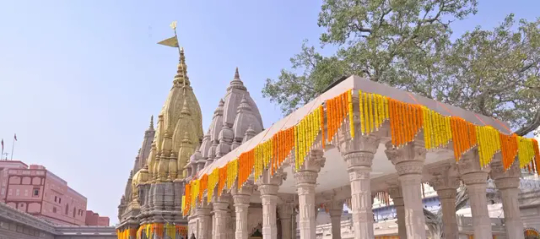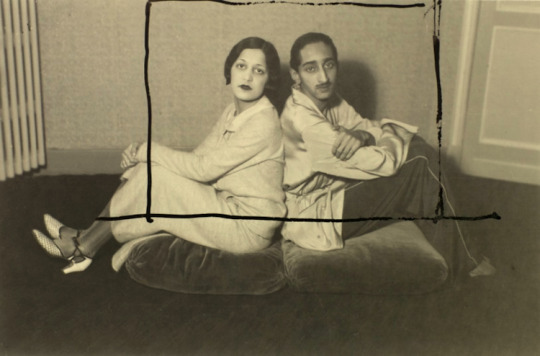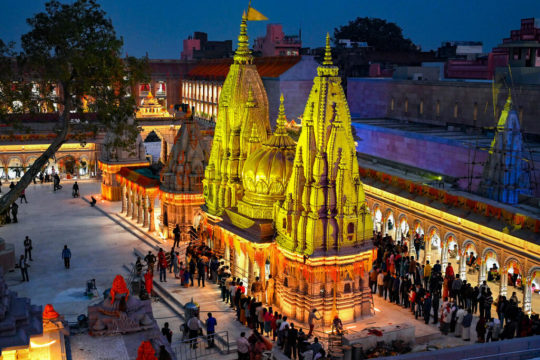#The Maharaja and Maharani of Indore
Explore tagged Tumblr posts
Photo










1935 Duesenberg SJ Gurney-Nutting Speedster
The Speedster body was fitted to chassis number 2614, which is believed to be the last Duesenberg chassis produced in 1935. The body was designed by A. F. McNeil and built by J. Gurney Nutting & Co. Ltd. in the fashionable Chelsea district in London.
The one-of-a-kind luxury automobile was built for Maharaja Holkar of Indore, India and commissioned through a British sales agent R.S.M Automobiles Ltd of London.
Destined for a life of royalty, the Gurney Nutting Speedster was built with unique, lavish features including a rumble seat with a concealed fold-down step built into the sides of the body for easy access, as well as red and blue lights on the front fender to indicate whether the Maharaja (red) or Maharani (blue) was driving the vehicle.
Upon its completion, the Duesenberg was delivered to the Maharaja’s mansion in Santa Ana, California due to fears of Japan invading India. After the tension in the region dropped, the automobile was shipped to India, then disappearing over time and thought to be lost until its rediscovery in 1959.
The outstanding auto was brought back to the U.S., eventually acquired by General Lyon. Restored with all of its royal touches retained, the 1935 Duesenberg placed first in the Maharaja Class at the 2012 Pebble Beach Concours d’Elegance and will now be showcased at the 2019 La Jolla Concours d’Elegance under the Registered Class: American Classics Open (1920-1948).
#art#design#sportcars#sportcar#vintagecars#vintagecar#peedster#india#classic cars#classic car#gurney nutting#royal#duesenberg#duesenberg gurney nutting speedster#indore#holkar#1935#luxurycars#luxurylifestyle#luxurycar#one-off#unique car
234 notes
·
View notes
Text
Why Is Kashi Vishwanath Temple Jyotirlinga So Sacred?
The Kashi Vishwanath Temple Jyotirlinga, located in the spiritual city of Varanasi, is one of the most revered and sacred temples dedicated to Lord Shiva. It stands as one of the twelve Jyotirlingas, which are considered the most powerful manifestations of Shiva. But what makes this temple so sacred, and why do millions of devotees visit it every year? Let’s explore the significance, history, and essential visitor information for this holy site.
The Spiritual Significance of Kashi Vishwanath Temple Jyotirlinga
The Kashi Vishwanath Temple Jyotirlinga is believed to be the very place where Lord Shiva granted liberation and enlightenment to his devotees. According to Hindu mythology, Varanasi (also known as Kashi) is the oldest living city in the world, and it is said that anyone who breathes their last here attains moksha (salvation). The Jyotirlinga of Kashi Vishwanath symbolizes the infinite nature of Lord Shiva and his supreme power.
Historical Importance
The history of Kashi Vishwanath Temple Jyotirlinga dates back several centuries. Although the temple has been reconstructed multiple times due to invasions and destruction, its spiritual essence has remained untouched. The current structure was built in 1780 by Maharani Ahilyabai Holkar of Indore. The temple’s golden spire and domes, later added by Maharaja Ranjit Singh of Punjab, give it a distinct and majestic appearance.
The Sacred Kashi Vishwanath Temple Shivling
The main attraction of the temple is the Kashi Vishwanath Temple Shivling, which is enshrined in the sanctum. This self-manifested (Swayambhu) Jyotirlinga is considered a powerful source of divine energy. Devotees offer water, milk, and flowers to the Shivling, seeking blessings and spiritual upliftment.
Why Is It So Sacred?
One of the Twelve Jyotirlingas: The Kashi Vishwanath Temple Jyotirlinga is one of the twelve Jyotirlingas, making it one of the most important pilgrimage sites for Shiva devotees.
Moksha and Salvation: It is believed that a visit to this temple and the city of Kashi ensures liberation from the cycle of birth and death.
Historical and Cultural Richness: The temple’s long history and its association with prominent Hindu saints and scholars add to its sacredness.
The City of Shiva: Varanasi is considered the abode of Lord Shiva, and this temple is its spiritual heart.
Best Time to Visit Kashi Vishwanath Temple Jyotirlinga
The best time to visit Kashi Vishwanath Temple Jyotirlinga is between October and March when the weather is pleasant. Early mornings and late evenings are ideal for darshan and aarti, as the crowd is relatively thinner.
Kashi Vishwanath Temple Varanasi Timings
Temple Opening: 3:00 AM to 11:00 PM
Mangala Aarti: 3:00 AM to 4:00 AM (Special paid entry)
General Darshan: 4:00 AM to 11:00 AM and 12:00 PM to 7:00 PM
Shringar Aarti: 7:00 PM to 8:30 PM
Shayan Aarti: 10:30 PM to 11:00 PM
Kashi Vishwanath Temple Aarti Experience
The Kashi Vishwanath Temple Aarti is a mesmerizing and spiritual event. The Mangala Aarti and Shringar Aarti are especially popular, attracting devotees from across the globe. It’s advisable to book your aarti passes in advance.
Where to Stay: Best Hotel Near Kashi Vishwanath Temple
For a comfortable stay, consider these options:
Brijrama Palace: A luxurious heritage hotel with stunning views of the Ganges.
Guleria Kothi: Known for its traditional architecture and peaceful ambiance.
Hotel Alka: A budget-friendly hotel with excellent accessibility.
Rooms Near Kashi Vishwanath Temple Jyotirlinga
If you prefer staying closer to the temple, several guesthouses, dharamshalas, and hotels offer various budget-friendly and comfortable options.
Conclusion
The Kashi Vishwanath Temple Jyotirlinga’s unmatched spiritual significance, rich history, and divine energy make it one of the most sacred places in India. Whether you seek spiritual solace, cultural exploration, or a deeper connection with Lord Shiva, a visit to this holy site is an experience of a lifetime. Plan your trip well, and immerse yourself in the divine aura of this timeless temple.
1 note
·
View note
Text
9.2: Artist Research - Grace Wales Bonner

Fig 1. Wales Bonner (2019) Autumn/Winter Collection, London.
Grace Wales Bonner launched the brand Wales Bonner in 2015 (Cook 2019), following her graduation at CSM in 2014, that originally focused on menswear but later expanded to include womenswear as well (Wales Bonner N/A). The Jamaican-British designer incorporates "European heritage with an Afro Atlantic spirit" (Wales Bonner N/A) and explores the identity of politics and black culture (Cook 2019) - redefining on black masculinity and what Britishness is while connecting her work to black diaspora (Nnadi 2019). Her works represent a new, multi-layered British identity - by being mixed race herself (English mother and Jamaican father), she wanted to convey the complicity of ethnic identity and race through her clothing line (Nnadi 2019). Wales Bonner does this by infusing Rastafarian crochet stripes and ornamentations from cowrie shells - ancient African currency - with British tailoring (Cook 2019). She stated: "I want to bring an Afro-Atlantic perspective to European luxury... It’s about valuing certain ideas around craft, and heritage, and tradition, and value all of these things in the same conversation." (Clark 2023).
Her works have not gone unnoticed. Her clothing has been worn by high profiled celebrities such as Megan Markle (for her first portrait with Prince Harry after the birth of their first child), Rihanna, A$AP Rocky, and FKA Twigs (Clark 2023; Cook 2019; Nnadi 2019). Having Megan Markle wear a Wales Bonner was depicted as significant in the black community. This was because Megan Markle, being mixed-race as well, is the first biracial member of the British royal family, and decided to wear the Wales Bonner brand - a brand that voices the racially marginalised at the front of its fashion (Cook 2019). Wales Bonner clothing also united black artists from other creative professions. In her Fall 2023 show during Paris Fashion Week, she cited a 1929 deco-period portrait of the Maharaja and Maharani of Indore as an inspiration of her work, and while the models walked down the runway, award-winning jazz trumpeter Herman Mehari was played (Clark 2023).
Being brought up in a biracial family, Wales Bonner stated how growing up she was looked for reflections of herself or reflections of her family (Cook 2019) in media and fashion. Her confusion in identity - being told she was too white for her black friends and too black for her white friends - sparked her interest of identity politics around race in her late teenage years (Clark 2023) which evidently has migrated into her fashion brand. In regards to her brand, she wants to increase the racial diversity of models, presenting her clothing on black or mixed-race models (Cook 2019). Due to the lack of representation of black models in the industry, part of her brand was formed in a reaction to it, especially black male representation (Cook 2019). Through her work she is "connecting to a lineage and a history where there are many examples of the very elegant, sophisticated characters that were part of a [historical] narrative that just weren’t being included.”
I enjoyed researching Grace Wales Bonner and what the Wales Bonner label stands for. I think it is great that she is including other racial heritages that are not mainstream, and giving exposure to how other cultures convey elegance and beauty. It was interesting to research about clothing representing ethnic and racial identity instead of class and gender, which has given me another outlook on dress. However, the history of fashion incorporating different cultures is very long and complex, and cannot begin to be summarised by just one contemporary fashion designer. Despite race not being part of my graphic media project, unlike class and gender, it has broadened out my knowledge on how fashion and dress can convey different identities.
References
Clark, M. (2023) The grand designs of Grace Wales Bonner. Fashion, GQ Magazine. Grace Wales Bonner: "My focus is on building an intuitively important luxury brand" | British GQ (gq-magazine.co.uk)
Cook, G. (2019) How Grace Wales Bonner is changing the face of fashion. Financial Times, The Financial Times Ltd. How Grace Wales Bonner is changing the face of fashion (ft.com)
Nnadi, C. (2019) 5 Reasons Why Grace Wales Bonner Is a Force of Fashion. Vogue. 5 Reasons Why Grace Wales Bonner Is a Force of Fashion | Vogue
Wales Bonner. (N/A) About About | Wales Bonner
0 notes
Text
Experience the Mystical Kashi Vishwanath Temple in Varanasi
Varanasi, also known as Kashi, is an ancient city in northern India, steeped in spirituality and cultural heritage. The city's vibrant colors, bustling streets, and ancient temples make it a captivating destination for travelers seeking a soulful experience. Among the numerous temples in Varanasi, the Shree Kashi Vishwanath Temple stands out as one of the most significant and revered pilgrimage sites.

History and Significance of Shree Kashi Vishwanath Temple
The Kashi Vishwanath Temple is dedicated to Lord Shiva and holds immense religious importance for Hindus. It is considered one of the twelve Jyotirlingas, which are believed to be the most sacred abodes of Lord Shiva. Over the centuries, the temple has undergone several cycles of destruction and reconstruction. The present structure was erected in the 18th century by Maharani Ahilyabai Holkar of Indore after the original temple was demolished by Emperor Aurangzeb.
Awe-Inspiring Architecture and Cultural Significance
The temple's architecture is a remarkable blend of Hindu and Islamic styles, reflecting the cultural diversity and history of the place. As visitors make their way through the maze of narrow lanes and alleys leading to the main sanctum, the sound of bells and chants creates an atmosphere of devotion and reverence. The intricate carvings and sculptures inside the temple showcase India's rich heritage and craftsmanship.
Interesting Facts and Traditions
The Shree Kashi Vishwanath Temple is not only a place of spiritual significance but also holds interesting facts and traditions:
Multiple Reconstructions: The temple has been destroyed and rebuilt multiple times, and the present structure stands as a testament to its resilience and the devotion of its followers.
Gold-Plated Dome and Spires: Maharaja Ranjit Singh of Punjab donated the gold-plated dome and two spires, adding to the temple's grandeur.
Distinguished Visitors: The temple has been graced by the presence of eminent figures, including former US President Barack Obama and French President Emmanuel Macron.
Offering of Silk Dhoti: A well-known tradition at the temple involves offering a silk dhoti and angavastram to Lord Vishwanath as a mark of honor.
Cultural Hub: The temple is not just a place of worship but also a hub of cultural activities, with music and dance performances held throughout the year.
Best Time to Visit Temple
The ideal time to visit the Kashi Vishwanath Temple is during the winter months, from November to February when the weather is pleasant, as Summer months can be hot, and monsoons bring heavy rainfall, making it difficult to explore the temple complex.
While visiting the temple, it is essential to adhere to the dress code and customs. Men are required to wear traditional Indian attire, like a dhoti-kurta or Pyjama-kurta, covering their heads with a cloth or cap/Hat. Women should dress modestly in sarees, salwar-kameez, or lehengas, also covering their heads.
Aarti Timings and the Mystical Experience
The temple follows a specific schedule for Aartis, Hindu rituals of offering prayers to the deities. The Mangala Aarti is performed early in the morning, waking up Lord Shiva, and seeking his blessings for the day ahead. The Bhog Aarti involves offering food to the deity, emphasizing the significance of charity. The Sandhya Aarti, performed in the evening, and the Shringar Aarti, the last of the day, is one of a kind experience.
The Kashi Vishwanath Corridor
In 2014, Prime Minister Shri Narendra Modi initiated the Kashi Vishwanath Corridor project to transform the temple's surroundings. The project aimed to ease congestion and enhance the overall pilgrimage experience. It involved acquiring and demolishing buildings and restoring heritage structures. Today, the corridor stands as a remarkable example of urban renewal and heritage conservation.
Stay at Niraan – The Tent City, Varanasi
For a luxurious and serene stay near the Kashi Vishwanath Temple, Niraan – The Tent City, Varanasi, is a perfect choice. Nestled along the Ganges, this glamping resort offers breathtaking views of the iconic ghats. Guests can immerse themselves in cultural immersion while enjoying bespoke accommodations and a range of facilities.
Conclusion: Embarking on a Mystical Journey
Visiting the Shree Kashi Vishwanath Temple in Varanasi is an experience that leaves a profound impact on one's soul. From its rich history and awe-inspiring architecture to its spiritual significance and cultural traditions, the temple offers a mystical journey into the heart of India's spiritual heritage. A visit to this sacred abode and a stay at Niraan – The Tent City, Varanasi, is a truly transformative experience, inviting travelers to embrace spirituality and immerse themselves in the charm of Varanasi.
0 notes
Photo

The Maharaja and Maharani of Indore par Man Ray
#The Maharaja and Maharani of Indore#Man Ray#Maharaja of Indore#Maharajah of Indore and his maharani#Maharani Sanyogita Devi#Sanyogita Devi#Portrait#Portraits
42 notes
·
View notes
Photo

Man Ray, The Maharaja and The Maharani of Indore, 1927-1930 © Man Ray 2015 Trust / ADAGO, Paris, 2019 +
20 notes
·
View notes
Text

MAHARAJA YESHWANT RAO HOLKAR II AND MAHARANI SANYOGITA DEVI - Man Ray circa 1927.
#maharaja of indore#rizey#maharaja yeshwant rao holkar#maharani sanyogita devi#indore#india#man ray#1920s#cartier#jazz age
3 notes
·
View notes
Photo

Maharadja et marahani modernes ! Par Boutet de Monvel aux Arts Deco ! #drawing #dessin #sketch #maharadja #maharaja #india #indore #inde #portrait #portraits #art #boutetdemonvel #beauty #artstagram #instaart #artlovers #artporn #detail #modernmaharaja #maharani #indian #paris #parisien #parisian #artsdeco #painting @madparis @al.thani.collection (à Musée des Arts décoratifs) https://www.instagram.com/p/B2_viNkojcg/?igshid=kdm03rcql4ik
#drawing#dessin#sketch#maharadja#maharaja#india#indore#inde#portrait#portraits#art#boutetdemonvel#beauty#artstagram#instaart#artlovers#artporn#detail#modernmaharaja#maharani#indian#paris#parisien#parisian#artsdeco#painting
1 note
·
View note
Text

Portrait of the Maharaja and Maharani of Indore, by Bernard Boutet de Monvel, 1934.
30 notes
·
View notes
Photo

“Those portraits of the Maharaja and Maharani of Indore by Man Ray are the epitome of glam and style. Wish today’s royals would do photos like these.” - Submitted by Anonymous
26 notes
·
View notes
Text



















youtube
Wales Bonner FW23 Menswear
From Sarah Mower's review for Vogue
Her abiding mission to elevate “Black male style; a very refined approach to masculinity” took on the Parisian sojourns of the American writer and intellectual giant James Baldwin, the fabulously wealthy young Maharaja and Maharani of Indore, and fanned out to admire the showgirl, style-maker and activist Josephine Baker. By immersing herself in their worlds, she said she found herself transported, not so much by the idea of literal references of costume as by the uplifting effect of the cultural atmosphere. “Thinking about what Paris as a place gave them license to do and express. This idea of freedom of self-expression, to define yourself.” Paris, she speculated, “may create space to have more license to be expressive.”
The award-winning jazz trumpeter Herman Mehari stood in the middle of the apartment and played as a procession of sophisticated “Black flanuers” threaded its way through the rooms. First out was a strikingly precise black tailored coat with half its upturned collar in white. On its breast was pinned a brooch—one of several composites of baroque pearl and Ghanaian bead jewelry that studded the show with a sense of the ceremonial.
Checking back on Wales Bonner’s sources, that riveting entrance was clearly an echo of a famous 1929 high Deco-period portrait of the Maharaja in black tie evening dress, flashing a white-lined cape.
She also knows how to elevate the ordinary, or the generic, to give it her own stamp of cachet. Cowrie-shell decoration has been in her repertoire from the very first; now she deployed it as lines of embroidery on an oversized ecru peacoat, white on white.
Her casual wear has her intellectualism coded into it too. When you’re wearing a Wales Bonner collegiate jacket with the words Sorbonne 56 sewn onto it, you’re referring to the First Congress of Black Artists and Writers in Paris, to which James Baldwin was a delegate. When sporty, there are also genuine cultural connections. Wales Bonner’s designs for the new adidas soccer kit for the Jamaican team was showcased.
As for the womenswear, well, this season Wales Bonner was rather obviously talking as much about herself as she was the inspirational Josephine Baker and Maharani of Indore. When the marled-knit drop-waist flapper dress and zig-zag knitted fluted skirt and tank came out, more than a few of us in the audience were giving each other side-long glances. In the chorus of praise that broke as the crowd filed out, people were exclaiming, “Didn’t they look exactly like Grace herself!" There’s no criticism in that. Because staying true to who she is as a designer, and building steadily on her own identity even while stepping in to play at a higher level in Paris is surely the name of the Wales Bonner longevity game.
3 notes
·
View notes
Text


The Maharaja and Maharani of Indore circa. 1927
Yeshwant Rao Holkar II and Sanyogita Devi, photographed by Man Ray
#they❤️#i know nothing of their life or politics but these are cute af#maharaja yeshwant rao holkar II#maharani sanyogita devi#sanyogita bai holkar#1920s photography#vintage love#my nonsense
41 notes
·
View notes
Text
Why Is Kashi Vishwanath Temple Jyotirlinga So Sacred? A Complete Visitor’s Guide
The Kashi Vishwanath Temple Jyotirlinga, located in the spiritual city of Varanasi, is one of the most revered and sacred temples dedicated to Lord Shiva. It stands as one of the twelve Jyotirlingas, which are considered the most powerful manifestations of Shiva. But what makes this temple so sacred, and why do millions of devotees visit it every year? Let’s explore the significance, history, and essential visitor information for this holy site.
The Spiritual Significance of Kashi Vishwanath Temple Jyotirlinga
The Kashi Vishwanath Temple Jyotirlinga is believed to be the very place where Lord Shiva granted liberation and enlightenment to his devotees. According to Hindu mythology, Varanasi (also known as Kashi) is the oldest living city in the world, and it is said that anyone who breathes their last here attains moksha (salvation). The Jyotirlinga of Kashi Vishwanath symbolizes the infinite nature of Lord Shiva and his supreme power.
Historical Importance
The history of Kashi Vishwanath Temple Jyotirlinga dates back several centuries. Although the temple has been reconstructed multiple times due to invasions and destruction, its spiritual essence has remained untouched. The current structure was built in 1780 by Maharani Ahilyabai Holkar of Indore. The temple’s golden spire and domes, later added by Maharaja Ranjit Singh of Punjab, give it a distinct and majestic appearance.
The Sacred Kashi Vishwanath Temple Shivling
The main attraction of the temple is the Kashi Vishwanath Temple Shivling, which is enshrined in the sanctum. This self-manifested (Swayambhu) Jyotirlinga is considered a powerful source of divine energy. Devotees offer water, milk, and flowers to the Shivling, seeking blessings and spiritual upliftment.
Why Is It So Sacred?
One of the Twelve Jyotirlingas: The Kashi Vishwanath Temple Jyotirlinga is one of the twelve Jyotirlingas, making it one of the most important pilgrimage sites for Shiva devotees.
Moksha and Salvation: It is believed that a visit to this temple and the city of Kashi ensures liberation from the cycle of birth and death.
Historical and Cultural Richness: The temple’s long history and its association with prominent Hindu saints and scholars add to its sacredness.
The City of Shiva: Varanasi is considered the abode of Lord Shiva, and this temple is its spiritual heart.
Best Time to Visit Kashi Vishwanath Temple Jyotirlinga
The best time to visit Kashi Vishwanath Temple Jyotirlinga is between October and March when the weather is pleasant. Early mornings and late evenings are ideal for darshan and aarti, as the crowd is relatively thinner.
Kashi Vishwanath Temple Varanasi Timings
Temple Opening: 3:00 AM to 11:00 PM
Mangala Aarti: 3:00 AM to 4:00 AM (Special paid entry)
General Darshan: 4:00 AM to 11:00 AM and 12:00 PM to 7:00 PM
Shringar Aarti: 7:00 PM to 8:30 PM
Shayan Aarti: 10:30 PM to 11:00 PM
Kashi Vishwanath Temple Aarti Experience
The Kashi Vishwanath Temple Aarti is a mesmerizing and spiritual event. The Mangala Aarti and Shringar Aarti are especially popular, attracting devotees from across the globe. It’s advisable to book your aarti passes in advance.
Where to Stay: Best Hotel Near Kashi Vishwanath Temple
For a comfortable stay, consider these options:
Brijrama Palace: A luxurious heritage hotel with stunning views of the Ganges.
Guleria Kothi: Known for its traditional architecture and peaceful ambiance.
Hotel Alka: A budget-friendly hotel with excellent accessibility.
Rooms Near Kashi Vishwanath Temple Jyotirlinga
If you prefer staying closer to the temple, several guesthouses, dharamshalas, and hotels offer various budget-friendly and comfortable options.
Conclusion
The Kashi Vishwanath Temple Jyotirlinga’s unmatched spiritual significance, rich history, and divine energy make it one of the most sacred places in India. Whether you seek spiritual solace, cultural exploration, or a deeper connection with Lord Shiva, a visit to this holy site is an experience of a lifetime. Plan your trip well, and immerse yourself in the divine aura of this timeless temple.
1 note
·
View note
Text

The Maharaja (Yeshwant Rao Holkar II) and Maharani of Indore (Sanyogita Bai Holkar)
2 notes
·
View notes
Text
Top 10 Places to visit in Varanasi for couples 2023
History of Varanasi
Varanasi is considered to be the most ancient spiritual city in India and one of the oldest inhabited cities in the world.
Tourism in Varanasi is considered to be one of the best touristry in up. According to the beliefs, this city situated on the trident of the god Shiva was established by god Shiva 5000 years ago. Its description is found in many Hindu texts.
Varanasi is known as the city of temples and ghats. It is the city with the highest no of ghats in the world.
It's considered one of the holiest cities in Hinduism and is considered sacred in Buddhism and Jainism. Gautam buddha gave his first sermon here.
It is known as Banaras and Kashi is situated on the bank of the holy river Ganges, this city attracts a lot not only Indian but also foreign tourists.
If you talk about tourism in Varanasi then go there places and feel the sanctity there.
Assi Ghat, Ravidas Park, Dashswamedh Ghat, the BHU campus, and Madhuban park are the best places to visit in Varanasi for couples.
Best places in Varanasi for couples
1. Kashi Vishwanath Temple

Talking about the major temples of Varanasi, the first name is Kashi Viswanath temple.
one of the 12 Jyotirlingas of lord shiva established here. If you come to travel to Varanasi then you should start your day from here. By visiting here, the soul feels pure and peaceful.
If we throw light on the history of this temple, it was broken and built many times.
This temple was renovated by maharani Ahilya bai of Indore in 1770-80.
Ahilya bai Holker built the Viswanath temple in this complex on which Maharaja Ranjit Singh of Punjab built a golden pot, maharani Baija bai of Gwalior built the Gyanwapi pavilion and maharaja Nepal installed a huge Nandi statue
Aarti
3:00 AM to 4:00 AM
Mangla Aarti
11:15 AM to 12:20 PM
Bhog/Aarti
7:00 PM to 8:15 PM
Saptirishi Aarti
9:00 PM to 10:15 PM
Night Shringar/Bhog Aarti
10:30 PM to 11:00 PM
Night shayan Aarti
2. Dasaswamedh Ghat
Dasaswamegh ghat is one of the primary and ancient ghats of Banaras.
It is believed that a person who takes a bath at this ghat and visits the Kashi Visvanath temple, all his sins are cut away and he attains salvation.
The main attraction of this ghat is the Ganga Arti in the evening which is visited by thousands of devotees and tourists every day.
Aarti Timing
summer :- 7 PM to 7:45 PM
Winter :- 6 PM to 6:45 PM
3. Assi Ghat
Assi ghat is situated at the confluence of the Assi river and The Ganga river. This ghat is very popular for tourism in Varanasi.
Assi Ghat is the best places to visit in Varanasi for couples.
Due to its location at the confluence of the two rivers it got the name Assi ghat. Assi ghat was built by Maharaja Banaras in the 19th century.
Tulsidas composed the famous Hindu text "Ramcharitmanas" on this ghat.
This is the last ghat located south of Banaras and this ghat is the center attraction from the point of view of the faith and tourism of the devotees.
Assi ghat is believed to be the place where the greatest poet Tulsidas died.
Here you can enjoy the Ganga Aarti and boating. If you are planning to travel to Banaras, then spend some time at Assi ghat.
Places to visit in Varanasi with Family
4. Durga Temple
Durga Mandir located in Durgakund is one of the ancient major temples of Kashi.
It is believed that Maa Durga had rested in this temple after killing the demons named Sumbha-Nishumbha.
It is a very important temple for devotees and tourism in Varanasi.
Maa Durga is seated in the form of a yantra in this temple.
The idols of Baba Bhaironath, Goddess Lakshmi, Maa Saraswati, and Mahakali are established in this temple.
There is a pool on one side of the very grand temple made of red stones, whose water does not dry up.
Worshiping Adishakti Maa Durga, all sins are burnt to ashes. In the month of Navratri and Sawan, the crowd of devotees increases a lot.
A fair is organized here in the month of Sawan, which is very popular among the residents here.
If you are thinking of traveling to Varanasi then definitely come here.... Read More
0 notes
Photo

Man Ray, The Maharaja and The Maharani of Indore, 1927-1930 © Man Ray 2015 Trust / ADAGO, Paris, 2019 +
18 notes
·
View notes